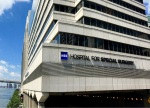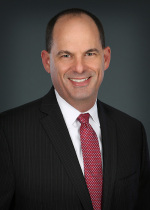Hospital for Special Surgery improves response times to 12 critical events
August 16, 2017
By Andrew Mellin
When Hurricane Sandy blew into New York City in November 2012, it was an unprecedented event.
The largest and most destructive storm the city had ever experienced, Sandy brought 80-mile- per-hour winds and produced massive storm surges. Battering winds and water caused heartbreaking devastation in the city, including 43 deaths. Nearly 90,000 buildings were in the “inundation zone,” almost 2 million people were left without power for days and damage estimates were close to $19 billion.
According to a city government report, a total of “51 square miles of New York City flooded, 17 percent of the city’s total land mass.” Officials called it a “virtual onslaught of water” that exceeded the 100-year floodplain boundary projections by 53 percent.
Many parts of the city’s vital infrastructure were severely impacted. Along with the power outages, New Yorkers had to deal with gas shortages, telecommunications outages (phone, wireless, cable and Internet) and disruptions in major transportation systems including the subway, train and ferry service.
The city’s hospitals were under tremendous strain. Six were closed altogether — four in Manhattan, one in Brooklyn and one in Staten Island — and some 6,500 patients (from hospitals and nursing homes) had to be evacuated. Those facilities that remained open struggled to maintain normal services, and did so due to the heroic efforts of staff who diverted or pumped out water and used generators to keep the power on.
Located near the East River, literally right over water, Hospital for Special Surgery (HSS) was vulnerable, but fortunate. The prestigious hospital, which attracts orthopedic patients and professional athletes from around the world, was just steps from encroaching, unpredictable flood waters.
“Just after the storm, our basement area was only a few feet away from the river coming into the hospital,” said Jason Vanrell, director of technical operations for HSS.
Of particular concern was the fact that the hospital’s nerve center — its operator bank and building alarm system — was located in the basement. A flood in that area would have knocked out the communications system for the whole hospital, and all the building alarms.
“There was a single alarm panel in the basement monitoring multiple systems, including gas and fire. It required operators to get up from their station and walk over to identify the alarm and then look up the right person to page,” said Vanrell. “If flood waters had made that area inaccessible, many of our vital systems would have been inoperable.”
Staff knew they needed to find a way to make their communications systems more portable and flexible. To be ready for the next emergency or natural disaster, they had to be able to monitor alarms and run other operations remotely at a moment’s notice. Being tied to just one area was not only inefficient, it was potentially dangerous.
For HSS, the solution involved implementing a comprehensive communications platform that allowed a lot more portability. The system lets operators do their jobs from any location with a computer, using a streamlined process that puts all the information needed at their fingertips. Calls can be handled with just a few keystrokes, and all alarms can be monitored and responded to quickly and easily from any location.
“There are 12 different alarm systems that are now feeding into our operator consoles, including medical, gas and fire. We don’t have to monitor a single panel in the basement anymore. The system can deliver alerts to the main console and then page the department or individual needed for a particular alarm,” said Vanrell. “We have really increased the efficiency and effectiveness of our communications center.”
Operators can log in at a number of different workstations to take phone calls and respond to alarms, greatly increasing the flexibility of the department. The next phase includes plans to allow contact center staff to work from home in case of weather situations such as snow storms.
“Bringing people in at all hours, including in the middle of the night, can be difficult. If we can set it up so they can work remotely, it would make a big difference for our contact center," said Vanrell.
One year after the storm, Gary Cohen, co-founder and president of Health Care Without Harm, warned that natural disasters like Sandy are “a wake-up call for health care providers to change their operations.”
When disasters hit, hospitals need to be as resilient as possible, providing service without interruption.
By improving the adaptability of their communications system, HSS staff has ensured that their organization will be prepared to help a city in need — if and when — they have to confront another major disaster.
About the author: Dr. Andrew Mellin is chief medical officer at Spok, Inc., and has almost 20 years of experience as both a practicing physician and health care executive. He has an extensive background in health information technology, including leading physician adoption programs for new technologies and developing innovative clinical solutions.
When Hurricane Sandy blew into New York City in November 2012, it was an unprecedented event.
The largest and most destructive storm the city had ever experienced, Sandy brought 80-mile- per-hour winds and produced massive storm surges. Battering winds and water caused heartbreaking devastation in the city, including 43 deaths. Nearly 90,000 buildings were in the “inundation zone,” almost 2 million people were left without power for days and damage estimates were close to $19 billion.
According to a city government report, a total of “51 square miles of New York City flooded, 17 percent of the city’s total land mass.” Officials called it a “virtual onslaught of water” that exceeded the 100-year floodplain boundary projections by 53 percent.
Many parts of the city’s vital infrastructure were severely impacted. Along with the power outages, New Yorkers had to deal with gas shortages, telecommunications outages (phone, wireless, cable and Internet) and disruptions in major transportation systems including the subway, train and ferry service.
The city’s hospitals were under tremendous strain. Six were closed altogether — four in Manhattan, one in Brooklyn and one in Staten Island — and some 6,500 patients (from hospitals and nursing homes) had to be evacuated. Those facilities that remained open struggled to maintain normal services, and did so due to the heroic efforts of staff who diverted or pumped out water and used generators to keep the power on.
Located near the East River, literally right over water, Hospital for Special Surgery (HSS) was vulnerable, but fortunate. The prestigious hospital, which attracts orthopedic patients and professional athletes from around the world, was just steps from encroaching, unpredictable flood waters.
“Just after the storm, our basement area was only a few feet away from the river coming into the hospital,” said Jason Vanrell, director of technical operations for HSS.
Of particular concern was the fact that the hospital’s nerve center — its operator bank and building alarm system — was located in the basement. A flood in that area would have knocked out the communications system for the whole hospital, and all the building alarms.
“There was a single alarm panel in the basement monitoring multiple systems, including gas and fire. It required operators to get up from their station and walk over to identify the alarm and then look up the right person to page,” said Vanrell. “If flood waters had made that area inaccessible, many of our vital systems would have been inoperable.”
Staff knew they needed to find a way to make their communications systems more portable and flexible. To be ready for the next emergency or natural disaster, they had to be able to monitor alarms and run other operations remotely at a moment’s notice. Being tied to just one area was not only inefficient, it was potentially dangerous.
For HSS, the solution involved implementing a comprehensive communications platform that allowed a lot more portability. The system lets operators do their jobs from any location with a computer, using a streamlined process that puts all the information needed at their fingertips. Calls can be handled with just a few keystrokes, and all alarms can be monitored and responded to quickly and easily from any location.
“There are 12 different alarm systems that are now feeding into our operator consoles, including medical, gas and fire. We don’t have to monitor a single panel in the basement anymore. The system can deliver alerts to the main console and then page the department or individual needed for a particular alarm,” said Vanrell. “We have really increased the efficiency and effectiveness of our communications center.”
Operators can log in at a number of different workstations to take phone calls and respond to alarms, greatly increasing the flexibility of the department. The next phase includes plans to allow contact center staff to work from home in case of weather situations such as snow storms.
“Bringing people in at all hours, including in the middle of the night, can be difficult. If we can set it up so they can work remotely, it would make a big difference for our contact center," said Vanrell.
One year after the storm, Gary Cohen, co-founder and president of Health Care Without Harm, warned that natural disasters like Sandy are “a wake-up call for health care providers to change their operations.”
When disasters hit, hospitals need to be as resilient as possible, providing service without interruption.
By improving the adaptability of their communications system, HSS staff has ensured that their organization will be prepared to help a city in need — if and when — they have to confront another major disaster.
About the author: Dr. Andrew Mellin is chief medical officer at Spok, Inc., and has almost 20 years of experience as both a practicing physician and health care executive. He has an extensive background in health information technology, including leading physician adoption programs for new technologies and developing innovative clinical solutions.

